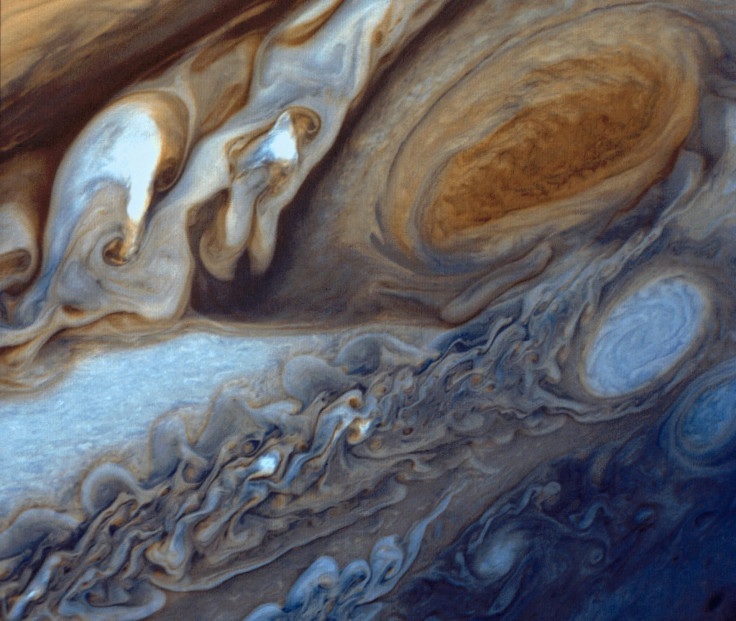Jupiter Great Red Spot Shrinking: Why Swirling Storm Will Soon Be The Size Of Earth

Jupiter’s Great Red Spot isn’t as great as it once was — the giant storm swirling on our solar system’s largest planet is shrinking. But why?
Science Channel offers a couple of ideas, including that its practice of cannibalizing other storms has backfired. The Great Red Spot is powerfully spinning in one direction and consumes any vortex that comes near it, a meal that would add to its power. But if a vortex is spinning more slowly or in the opposite direction of the spot, it could eat away at the larger one’s spin and thus reduce its size.
Read: Alien Super-Jupiter Orbits a Cool Star
Another option is that there are simply fewer storms sacrificing themselves to the Great Red Spot these days.
The swirling Great Red Spot is Jupiter’s defining feature. The vicious storm is wider than Earth and has winds moving hundreds of miles per hour. It is bounded by two jet streams flowing above and below, powerful enough to trap it.
NASA announced the superstorm was shrinking a few years ago, after its Hubble Space Telescope orbiting Earth recorded its width at the smallest ever measured: only 10,250 miles across. That size is “less than half the size of some historical measurements,” NASA said at the time. “Historic observations as far back as the late 1800s gauged the storm to be as large as 25,500 miles on its long axis.”
According to NASA, the shrinkage was not a new idea — “astronomers have followed this downsizing since the 1930s.” In 1979, the Voyager 1 and Voyager 2 spacecraft clocked it in at 14,500 miles, and data from 1995 showed it to be just over 13,000 miles. In 2009, it was down to 11,130 miles.
What was once an oval is now closer to a circle.
During the previous years of observation, the space agency’s Juno spacecraft hadn’t yet reached Jupiter on its mission to study the planet. It is there now, however. Earlier this year, Juno went on its fifth flyby of the gas giant, sending back photos of a surface broiling with storms. It could help us better understand what is going on at the Great Red Spot.
Scientists have known for a while that smaller storms feed into the enormous one, which according to Science Channel is big enough to reach 5 miles above Jupiter’s clouds. The question is how those smaller storms change the system.
There is another unknown: What will happen to Jupiter if the Great Red Spot fades away? Recent research suggests the fierce storm is feeding heat into the planet’s upper atmosphere, keeping it a comparable temperature to what we see in Earth’s upper atmosphere, despite being much farther from the sun. The only way to find out may be to sit and wait for the spot to shrink until it disappears.
Well, all storms have to end sometime.
See also:
© Copyright IBTimes 2025. All rights reserved.




















